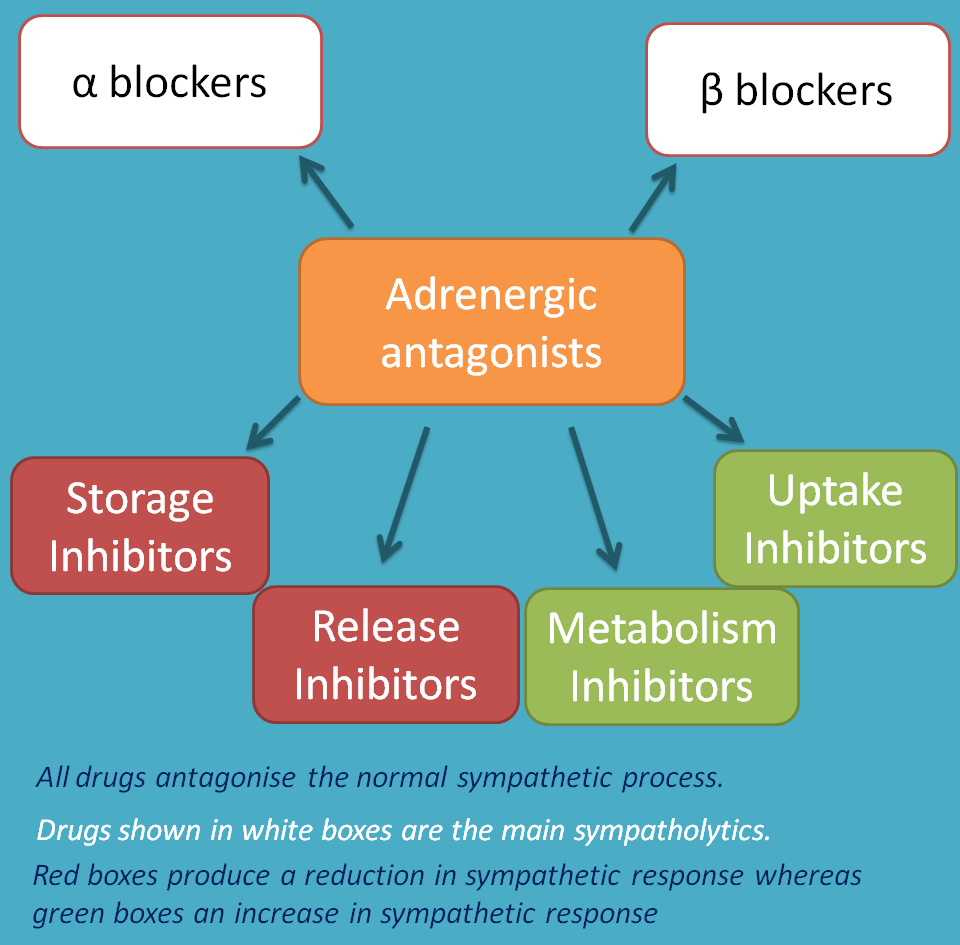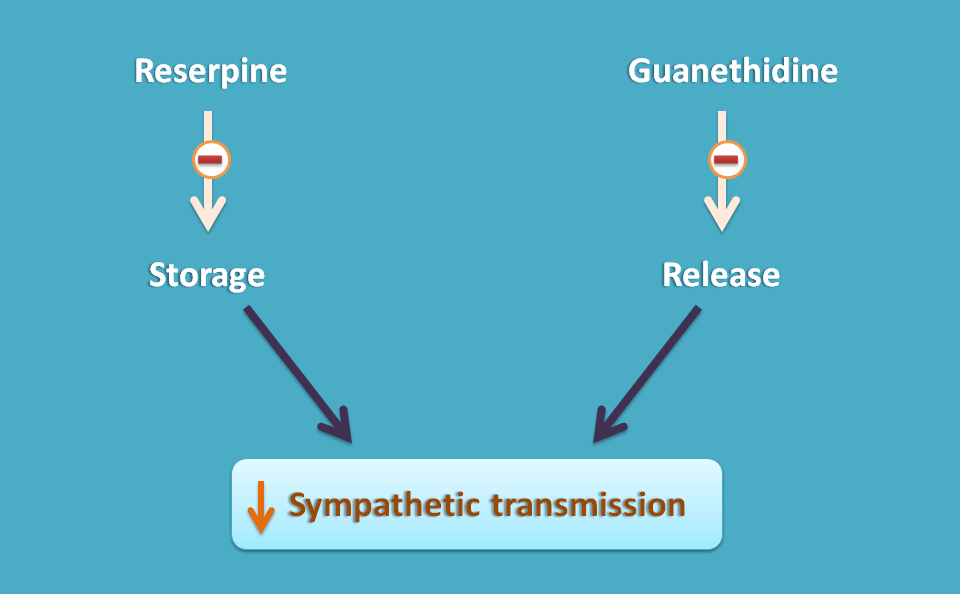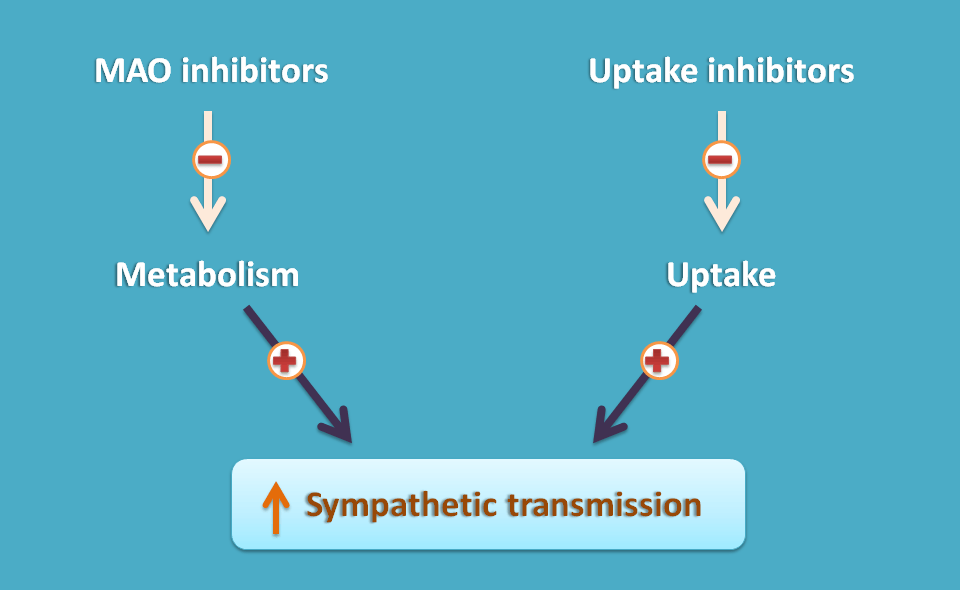Adrenergic antagonists -Introduction
These are the drugs which antagonise the action of adrenergic system hence produce quite opposite actions shown by sympathetic system. Since they block sympathetic actions, these drugs are also called as sympatholytics.
Since sympathetic system acts through two receptors such as alpha receptors and beta receptors, those drugs blocking any of these two receptors or their subtypes are classified as sympatholytics.
Similarly, few of the drugs interfere with sympathetic system presynaptically by affecting release, storage, metabolism or uptake. Even the main function of all these agents is same i.e. to inhibit the normal functionality at sympathetic nerve terminals, the effect they produce may vary sometimes blocking the adrenergic system and sometimes enhancing.

For example, reserpine is a sympatholytic that blocks vesicular storage of norepinephrine thereby depletes its stores leading to decreased sympathetic discharge at nerve terminals. Therefore it acts as sympatholytic.

Similarly, noradrenergic release blocker like guanethidine also inhibits release of norepinephrine thereby decreases adrenergic transmission.
MAO inhibitors like phenelzine, tranlycypromine inhibit one of the cytoplasmic enzyme, monoamine oxidase, that metabolises catechol amines. Therefore these agents increase catecholamine levels within the cytoplasm which are then stored into the vesicles and released by exocytosis. In this way, MAO inhibitors increase adrenergic transmission.

Similarly, uptake inhibitors like TCAs and cocaine inhibit the uptake of catechol amines thereby enhance adrenergic transmission. Again these agents antagonise natural uptake mechanism of catechol amines but the final effect they produce is an increase in adrenergic transmission.